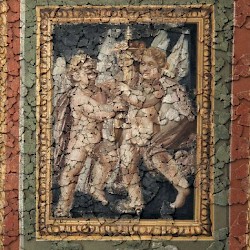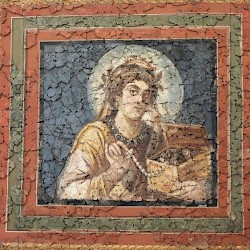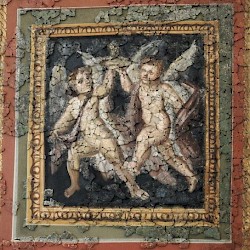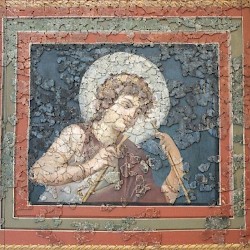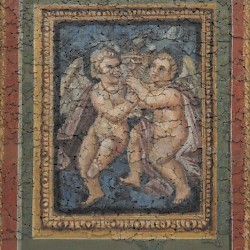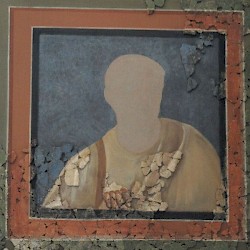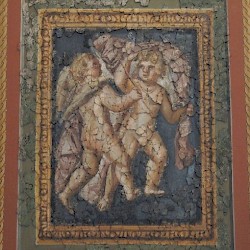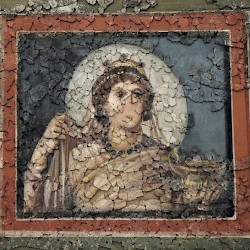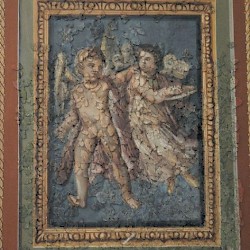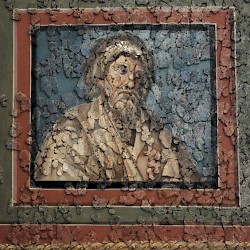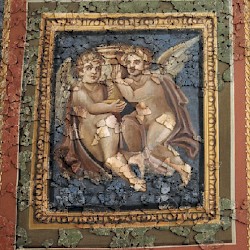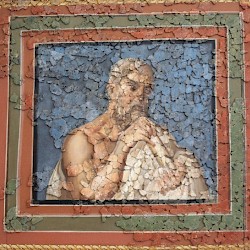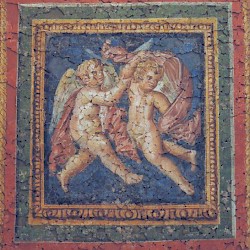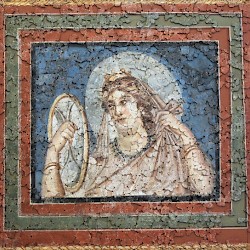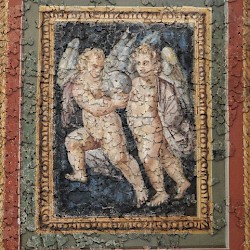Trier, Fausta's Fresco
Augusta Treverorum: important Roman city, modern Trier.
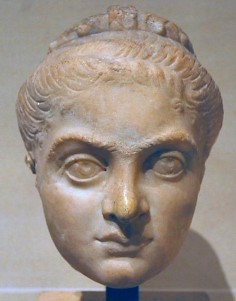
Among the most splendid objects in Trier's lovely Bischöfliches Dom- und Diözesanmuseum belongs this fresco from the first years of the fourth century, which once decorated the ceiling of a luxurious mansion that was destroyed when the cathedral ("Dom") was built. The fresco consists of no less than 30,000 fragments and it comes as no surprise that it took some ten years to complete this puzzle. The greatest surprise was the central scene: a lady who must be identified as the empress Fausta, wife of Constantine the Great.
It is hard to identify the individual scenes. We recognize Amor and Psyche, well-known from the fairy tale told by Apuleius in the Metamorphoses of Lucius (the "Golden Ass"), three philosophers, and several erotes. The erotes can mean anything. One of the philosophers may be Apuleius. The three ladies may be representations of the splendor, education, and elegance that were - according to the imperial propaganda - typical of this happy age (felicitas temporum). Alternatively, the three ladies can represent adornment, music, and beauty.
However that may be, the representations are completely pagan in nature. The persons who ordered this work of art, were no Christians, which suggests a date early in the reign of Constantine.
| Erotes | Lady | Erotes | Lady | Erotes |
| Philosopher | Erotes | Fausta | Amor & Psyche | Philosopher |
| Erotes | Philosopher | Erotes | Lady | Erotes |
